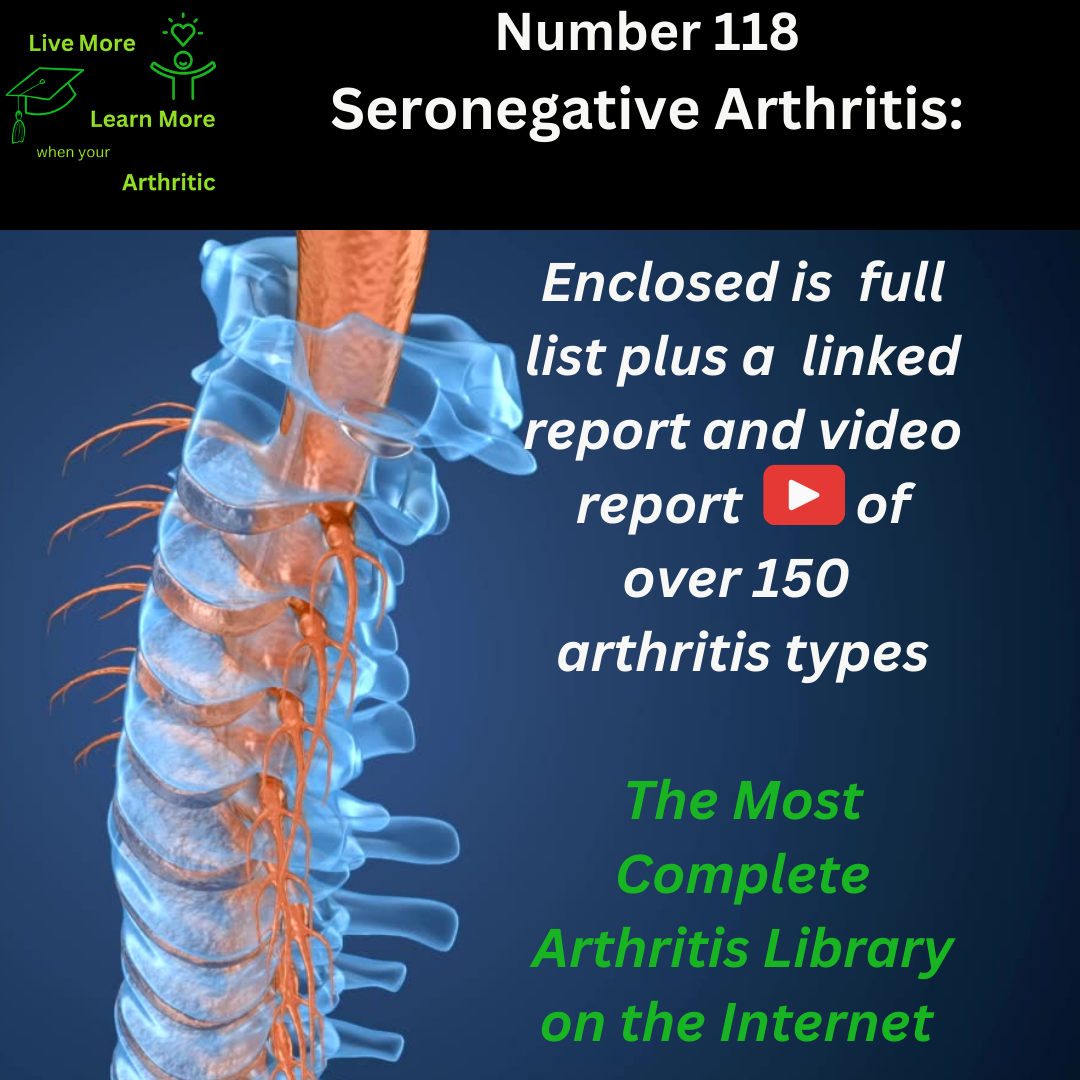
Seronegative Arthritis: Number 118 of around 150 types of Arthritis
Understanding Seronegative Arthritis
Seronegative arthritis refers to a group of inflammatory joint conditions where the typical markers of autoimmune arthritis, such as rheumatoid factor (RF) and anti-cyclic citrullinated peptide (anti-CCP) antibodies, are not present in the blood. This category includes several types of arthritis, each affecting different parts of the body and presenting unique challenges.
Affected Joints and Symptoms
The joints commonly affected by seronegative arthritis vary depending on the specific type but often involve the spine (as in ankylosing spondylitis), large joints like the knees and ankles (as in psoriatic arthritis), or the sacroiliac joints (as in reactive arthritis). Symptoms include joint pain, stiffness, swelling, and limited range of motion. Back pain and morning stiffness are particularly characteristic of some forms of seronegative arthritis.
Description and Causes
Seronegative arthritis encompasses several conditions, including ankylosing spondylitis, psoriatic arthritis, reactive arthritis (formerly known as Reiter’s syndrome), and enteropathic arthritis associated with inflammatory bowel disease. These conditions are believed to be autoimmune in nature, where the immune system mistakenly attacks the body’s own tissues, particularly the joints.
Onset and Risk Factors
The onset of seronegative arthritis can occur at any age, but it often manifests in young to middle-aged adults. Certain genetic factors, such as the presence of specific human leukocyte antigen (HLA) genes, play a role in predisposing individuals to these conditions. Environmental triggers such as infections or trauma can also contribute to disease onset.
Complications and Impact
Seronegative arthritis can lead to complications such as joint deformities, loss of mobility, and reduced quality of life. Chronic inflammation in the joints can cause erosion of cartilage and bone, leading to irreversible damage. In some cases, extra-articular manifestations such as uveitis (eye inflammation), skin lesions, or gastrointestinal symptoms may occur.
Mechanism of Symptoms
The inflammation associated with seronegative arthritis leads to swelling and increased pressure within the joints, causing pain and stiffness. The immune system’s attack on joint tissues can result in cartilage destruction and bone erosion over time, contributing to joint deformities and loss of function.
Improving Quality of Life
Although there is no cure for seronegative arthritis, proactive management can significantly improve quality of life. Treatment strategies may include medications to control inflammation, physical therapy to maintain joint flexibility and strength, and lifestyle modifications such as exercise and a balanced diet.
Possible Complications
Complications of seronegative arthritis can include joint deformities, osteoporosis due to reduced mobility, cardiovascular disease, and increased susceptibility to infections. Chronic inflammation can also impact other organs and systems in the body, leading to systemic complications.
Demographic Trends
Seronegative arthritis can affect individuals of all ages and genders, but certain types may have specific demographic patterns. For example, ankylosing spondylitis is more common in young males, while psoriatic arthritis can affect both men and women with a history of psoriasis.
Interconnected Diseases
Individuals with seronegative arthritis may be at increased risk of developing other autoimmune conditions, such as inflammatory bowel disease, uveitis, or skin disorders like psoriasis. This interconnectedness highlights the importance of comprehensive healthcare and monitoring for associated conditions.
In summary, seronegative arthritis encompasses a group of inflammatory joint disorders characterized by the absence of typical autoimmune markers. While these conditions pose significant challenges, proactive management and early intervention can help individuals achieve a higher quality of life and mitigate potential complications associated with this category of arthritis.

